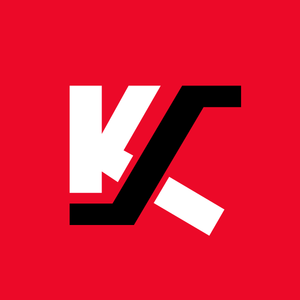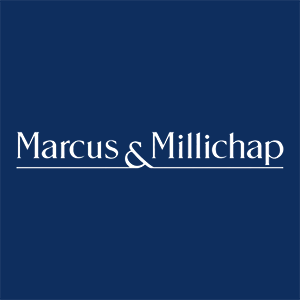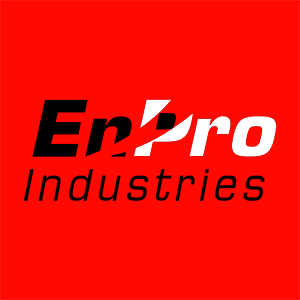
Graham Corporation (GHM)
Graham Corporation catches our eye, but its cash burn shows it only has 23 months of runway left.― StockStory Analyst Team
1. News
2. Summary
Why Graham Corporation Is Not Exciting
Founded when its founder patented a unique design for a vacuum system used in the sugar refining process, Graham (NYSE:GHM) provides vacuum and heat transfer equipment for the energy, petrochemical, refining, and chemical sectors.
- Underwhelming 3.1% return on capital reflects management’s difficulties in finding profitable growth opportunities
- Subpar operating margin constrains its ability to invest in process improvements or effectively respond to new competitive threats
- Short cash runway increases the probability of a capital raise that dilutes existing shareholders


Graham Corporation has some respectable qualities, but we’d refrain from buying the stock until its EBITDA can comfortably support its debt.
Why There Are Better Opportunities Than Graham Corporation
High Quality
Investable
Underperform
Why There Are Better Opportunities Than Graham Corporation
At $71.16 per share, Graham Corporation trades at 47.3x forward P/E. This valuation is extremely expensive, especially for the quality you get.
There are stocks out there featuring similar valuation multiples with better fundamentals. We prefer to invest in those.
3. Graham Corporation (GHM) Research Report: Q3 CY2025 Update
Industrial fluid and energy systems manufacturer Graham Corporation (NYSE: GHM) beat Wall Street’s revenue expectations in Q3 CY2025, with sales up 23.3% year on year to $66.03 million. The company expects the full year’s revenue to be around $230 million, close to analysts’ estimates. Its GAAP profit of $0.28 per share was in line with analysts’ consensus estimates.
Graham Corporation (GHM) Q3 CY2025 Highlights:
- Revenue: $66.03 million vs analyst estimates of $57.55 million (23.3% year-on-year growth, 14.7% beat)
- EPS (GAAP): $0.28 vs analyst estimates of $0.28 (in line)
- Adjusted EBITDA: $6.30 million vs analyst estimates of $6.04 million (9.5% margin, 4.3% beat)
- The company reconfirmed its revenue guidance for the full year of $230 million at the midpoint
- EBITDA guidance for the full year is $25 million at the midpoint, above analyst estimates of $24.58 million
- Operating Margin: 6.2%, in line with the same quarter last year
- Free Cash Flow Margin: 14.3%, down from 19.5% in the same quarter last year
- Backlog: $500.1 million at quarter end
- Market Capitalization: $709.1 million
Company Overview
Founded when its founder patented a unique design for a vacuum system used in the sugar refining process, Graham (NYSE:GHM) provides vacuum and heat transfer equipment for the energy, petrochemical, refining, and chemical sectors.
The company primarily serves the defense, space, energy, and process industries. Graham's product offerings include custom-engineered vacuum and heat transfer equipment, cryogenic pumps, and turbomachinery technologies.
The company operates through two main segments: its core business in Batavia, which focuses on surface condensers and ejectors for defense, energy, and petrochemical markets, and its subsidiary Barber-Nichols LLC (BN) in Arvada, Colorado, which specializes in turbomachinery products for space, aerospace, cryogenic, defense, and energy markets. Graham also has a presence in China and India through wholly-owned subsidiaries that provide sales and engineering support.
Graham's product portfolio includes equipment for nuclear and non-nuclear propulsion systems, power generation, fluid transfer, and thermal management in defense applications. For the space industry, the company provides equipment for propulsion, power, energy management, and life support systems. In the energy sector, Graham supplies vacuum and heat transfer systems for oil refining, cogeneration, and various alternative power applications, including hydrogen. The company also serves chemical and petrochemical industries with equipment used in fertilizer, ethylene, methanol, and other downstream chemical facilities.
The company's revenue structure is primarily based on the sale of its custom-engineered products. Graham's business model revolves around high-value, engineered-to-order equipment that often requires significant upfront engineering and design work. The company's sales are heavily weighted towards domestic markets, with a growing concentration in the defense industry.
A notable recent acquisition was that of P3 Technologies, LLC in November 2023. This acquisition brought custom turbomachinery engineering and manufacturing capabilities to Graham, serving the space, new energy, defense, and medical industries.
4. Engineered Components and Systems
Engineered components and systems companies possess technical know-how in sometimes narrow areas such as metal forming or intelligent robotics. Lately, automation and connected equipment collecting analyzable data have been trending, creating new demand. On the other hand, like the broader industrials sector, engineered components and systems companies are at the whim of economic cycles. Consumer spending and interest rates, for example, can greatly impact the industrial production that drives demand for these companies’ offerings.
Competitors offering similar products include SPX Flow (NYSE:FLOW), Gardner Denver (NYSE:GDI), and Chart Industries (NYSE:GTLS).
5. Revenue Growth
A company’s long-term sales performance can indicate its overall quality. Any business can experience short-term success, but top-performing ones enjoy sustained growth for years. Over the last five years, Graham Corporation grew its sales at an incredible 19.6% compounded annual growth rate. Its growth beat the average industrials company and shows its offerings resonate with customers.
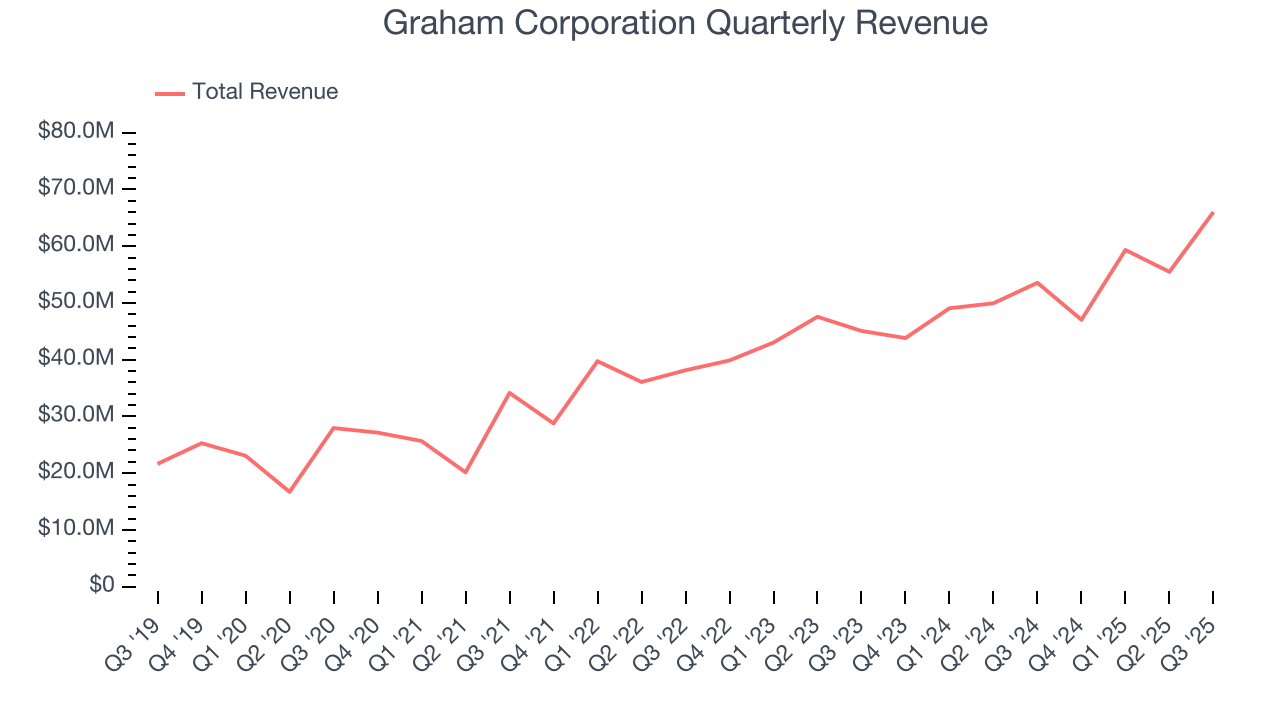
Long-term growth is the most important, but within industrials, a half-decade historical view may miss new industry trends or demand cycles. Graham Corporation’s annualized revenue growth of 13.9% over the last two years is below its five-year trend, but we still think the results suggest healthy demand. 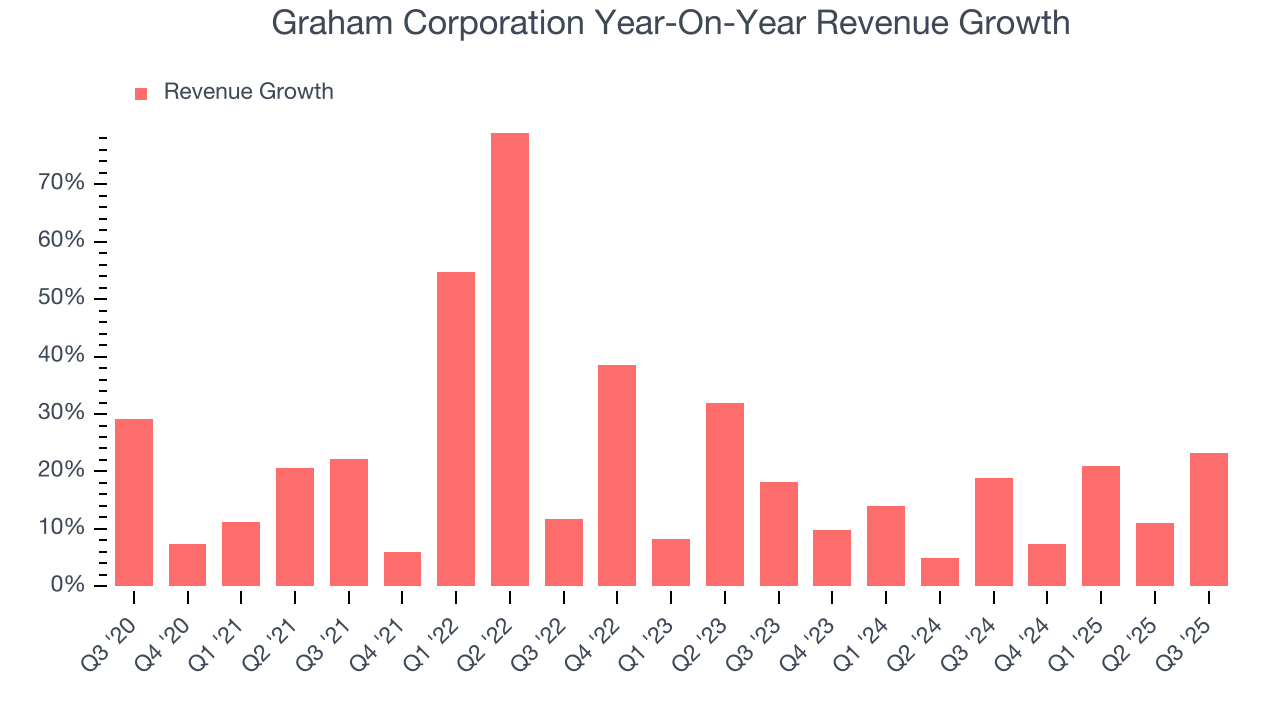
Graham Corporation also reports its backlog, or the value of its outstanding orders that have not yet been executed or delivered. Graham Corporation’s backlog reached $500.1 million in the latest quarter and averaged 21.7% year-on-year growth over the last two years. Because this number is better than its revenue growth, we can see the company accumulated more orders than it could fulfill and deferred revenue to the future. This could imply elevated demand for Graham Corporation’s products and services but raises concerns about capacity constraints. 
This quarter, Graham Corporation reported robust year-on-year revenue growth of 23.3%, and its $66.03 million of revenue topped Wall Street estimates by 14.7%.
Looking ahead, sell-side analysts expect revenue to grow 9.4% over the next 12 months, a deceleration versus the last two years. Despite the slowdown, this projection is healthy and suggests the market sees success for its products and services.
6. Gross Margin & Pricing Power
Graham Corporation has bad unit economics for an industrials business, signaling it operates in a competitive market. As you can see below, it averaged a 19.7% gross margin over the last five years. That means Graham Corporation paid its suppliers a lot of money ($80.29 for every $100 in revenue) to run its business. 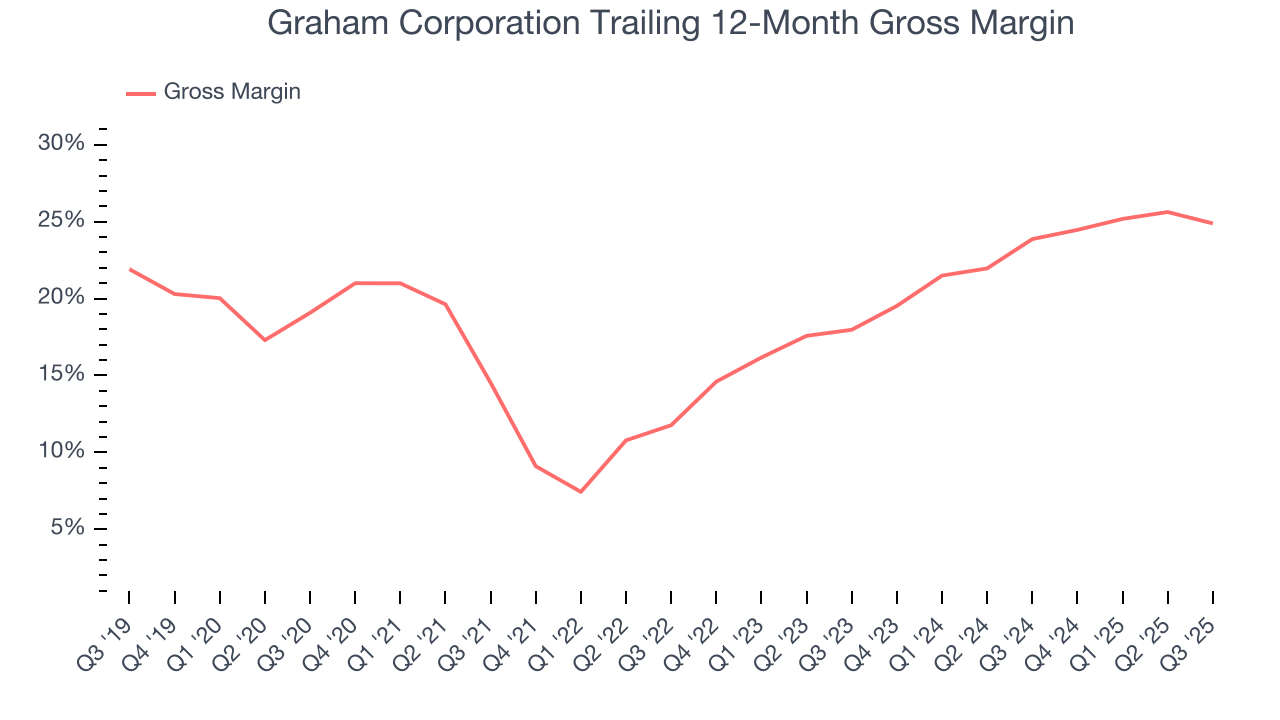
Graham Corporation’s gross profit margin came in at 21.7% this quarter, down 2.2 percentage points year on year. On a wider time horizon, however, Graham Corporation’s full-year margin has been trending up over the past 12 months, increasing by 1 percentage points. If this move continues, it could suggest better unit economics due to more leverage from its growing sales on the fixed portion of its cost of goods sold (such as manufacturing expenses).
7. Operating Margin
Operating margin is an important measure of profitability as it shows the portion of revenue left after accounting for all core expenses – everything from the cost of goods sold to advertising and wages. It’s also useful for comparing profitability across companies with different levels of debt and tax rates because it excludes interest and taxes.
Graham Corporation was profitable over the last five years but held back by its large cost base. Its average operating margin of 2.3% was weak for an industrials business. This result isn’t too surprising given its low gross margin as a starting point.
On the plus side, Graham Corporation’s operating margin rose by 9.1 percentage points over the last five years, as its sales growth gave it immense operating leverage.
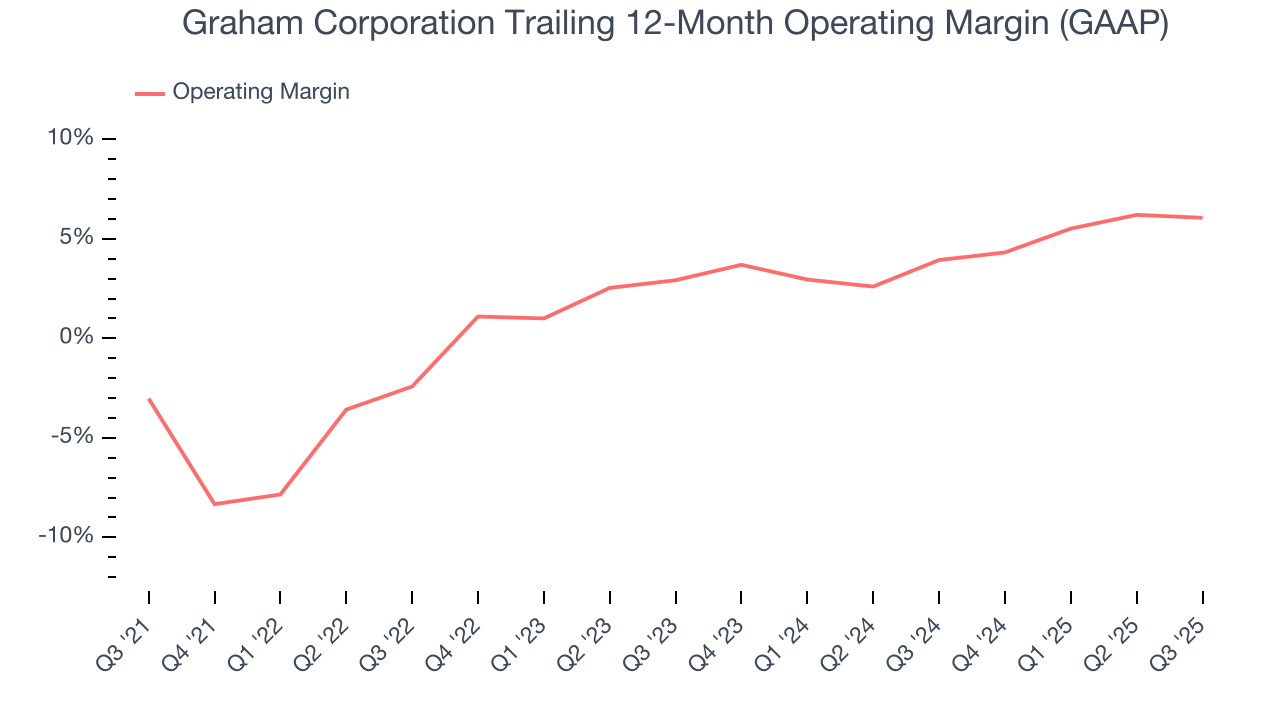
In Q3, Graham Corporation generated an operating margin profit margin of 6.2%, in line with the same quarter last year. This indicates the company’s cost structure has recently been stable.
8. Earnings Per Share
Revenue trends explain a company’s historical growth, but the long-term change in earnings per share (EPS) points to the profitability of that growth – for example, a company could inflate its sales through excessive spending on advertising and promotions.
Graham Corporation’s EPS grew at an astounding 52.6% compounded annual growth rate over the last five years, higher than its 19.6% annualized revenue growth. This tells us the company became more profitable on a per-share basis as it expanded.
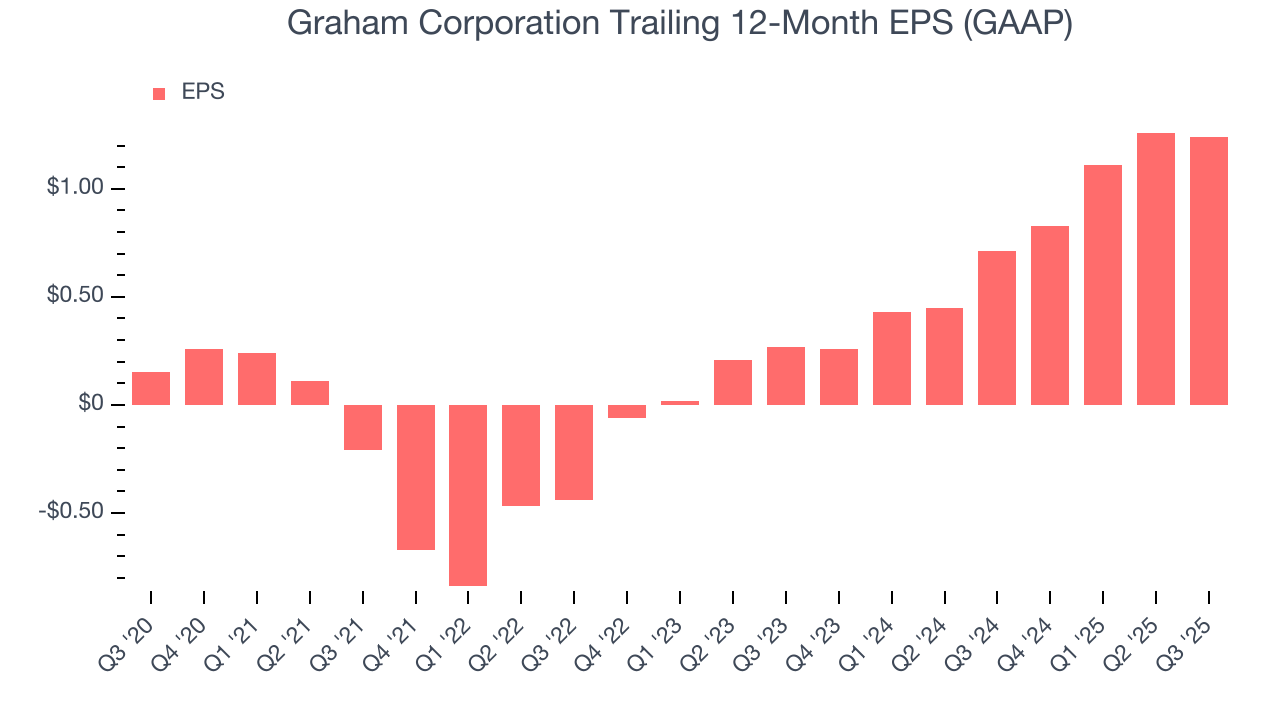
We can take a deeper look into Graham Corporation’s earnings to better understand the drivers of its performance. As we mentioned earlier, Graham Corporation’s operating margin was flat this quarter but expanded by 9.1 percentage points over the last five years. This was the most relevant factor (aside from the revenue impact) behind its higher earnings; interest expenses and taxes can also affect EPS but don’t tell us as much about a company’s fundamentals.
Like with revenue, we analyze EPS over a shorter period to see if we are missing a change in the business.
For Graham Corporation, its two-year annual EPS growth of 114% was higher than its five-year trend. We love it when earnings growth accelerates, especially when it accelerates off an already high base.
In Q3, Graham Corporation reported EPS of $0.28, down from $0.30 in the same quarter last year. This print was close to analysts’ estimates. Over the next 12 months, Wall Street expects Graham Corporation’s full-year EPS of $1.24 to grow 11.5%.
9. Cash Is King
If you’ve followed StockStory for a while, you know we emphasize free cash flow. Why, you ask? We believe that in the end, cash is king, and you can’t use accounting profits to pay the bills.
Graham Corporation has shown weak cash profitability over the last five years, giving the company limited opportunities to return capital to shareholders. Its free cash flow margin averaged 3.4%, subpar for an industrials business.
Taking a step back, an encouraging sign is that Graham Corporation’s margin expanded by 5.4 percentage points during that time. We have no doubt shareholders would like to continue seeing its cash conversion rise as it gives the company more optionality.

Graham Corporation’s free cash flow clocked in at $9.44 million in Q3, equivalent to a 14.3% margin. The company’s cash profitability regressed as it was 5.2 percentage points lower than in the same quarter last year, but it’s still above its five-year average. We wouldn’t put too much weight on this quarter’s decline because capital expenditures can be seasonal and companies often stockpile inventory in anticipation of higher demand, causing short-term swings. Long-term trends carry greater meaning.
10. Return on Invested Capital (ROIC)
EPS and free cash flow tell us whether a company was profitable while growing its revenue. But was it capital-efficient? A company’s ROIC explains this by showing how much operating profit it makes compared to the money it has raised (debt and equity).
Graham Corporation historically did a mediocre job investing in profitable growth initiatives. Its five-year average ROIC was 3.1%, lower than the typical cost of capital (how much it costs to raise money) for industrials companies.
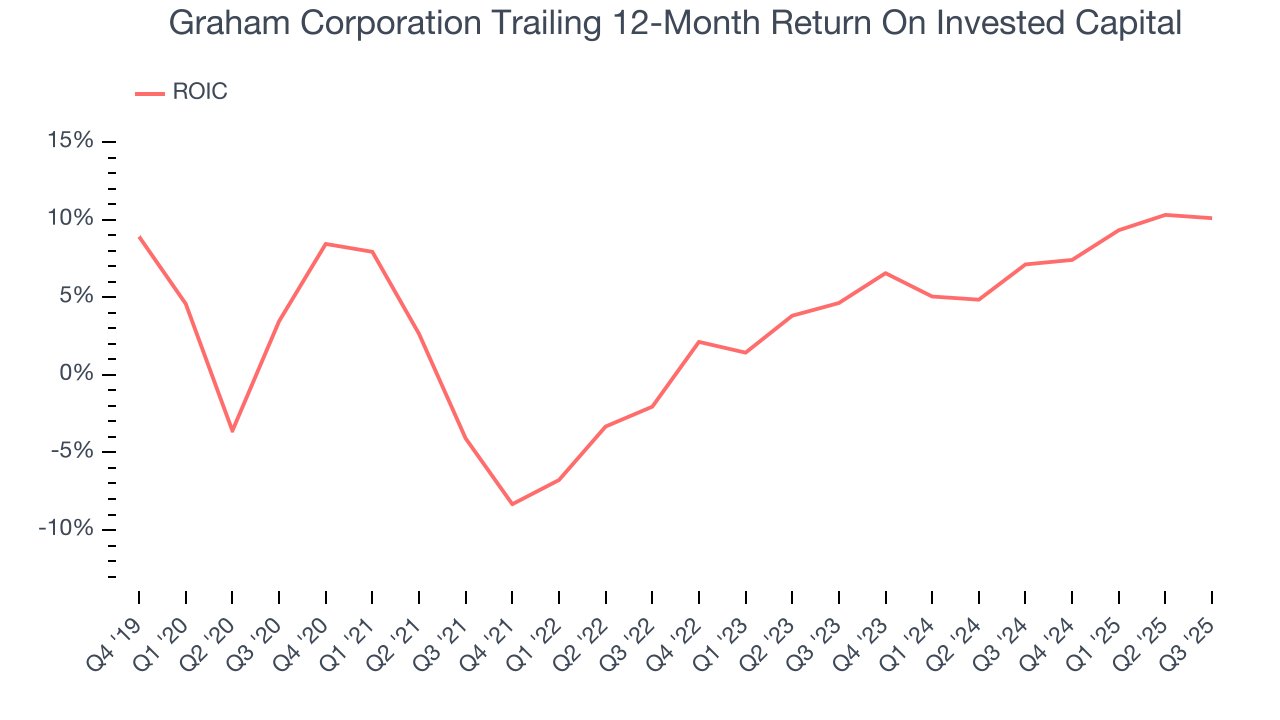
We like to invest in businesses with high returns, but the trend in a company’s ROIC is what often surprises the market and moves the stock price. Over the last few years, Graham Corporation’s ROIC has increased. This is a good sign, but we recognize its lack of profitable growth during the COVID era was the primary reason for the change.
11. Balance Sheet Risk
As long-term investors, the risk we care about most is the permanent loss of capital, which can happen when a company goes bankrupt or raises money from a disadvantaged position. This is separate from short-term stock price volatility, something we are much less bothered by.
Graham Corporation burned through $10.65 million of cash over the last year. With $20.58 million of cash on its balance sheet, the company has around 23 months of runway left (assuming its $6.35 million of debt isn’t due right away).
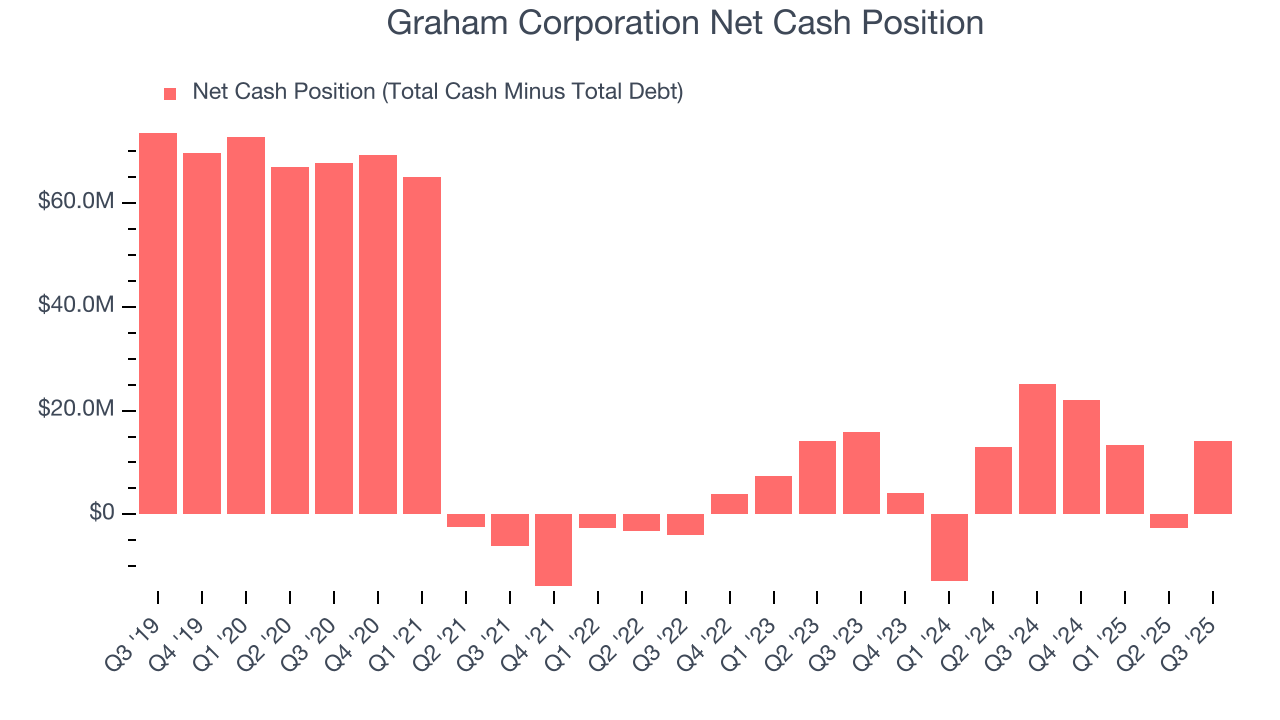
Unless the Graham Corporation’s fundamentals change quickly, it might find itself in a position where it must raise capital from investors to continue operating. Whether that would be favorable is unclear because dilution is a headwind for shareholder returns.
We remain cautious of Graham Corporation until it generates consistent free cash flow or any of its announced financing plans materialize on its balance sheet.
12. Key Takeaways from Graham Corporation’s Q3 Results
We were impressed by how significantly Graham Corporation blew past analysts’ revenue expectations this quarter. We were also glad its EBITDA outperformed Wall Street’s estimates. Overall, we think this was still a solid quarter with some key areas of upside. The stock remained flat at $64.12 immediately after reporting.
13. Is Now The Time To Buy Graham Corporation?
Updated: December 24, 2025 at 10:40 PM EST
Before deciding whether to buy Graham Corporation or pass, we urge investors to consider business quality, valuation, and the latest quarterly results.
Aside from its balance sheet, Graham Corporation is a pretty good company. For starters, its revenue growth was exceptional over the last five years. And while its relatively low ROIC suggests management has struggled to find compelling investment opportunities, its backlog growth has been marvelous. Additionally, Graham Corporation’s rising cash profitability gives it more optionality.
Graham Corporation’s P/E ratio based on the next 12 months is 47.3x. Despite its notable business characteristics, we’d hold off for now because its balance sheet concerns us. If you’re interested in buying the stock, wait until its debt falls or its profits increase.
Wall Street analysts have a consensus one-year price target of $69.25 on the company (compared to the current share price of $71.16).
